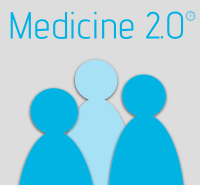Medical education and building an on-line reputation in the world of web 2.0
|
If you are the presenter of this abstract (or if you cite this abstract in a talk or on a poster), please show the QR code in your slide or poster (QR code contains this URL). |
Abstract
The new websites, services and tools of web 2.0 can play an important role in the future of medical education. These web tools, expert-based community sites, medical blogs and wikis can facilitate the work of physicians, scientists, medical students or medical librarians. The new generation of web services can change the way medicine is practised and healthcare is delivered.
In the new, web-based world, building an on-line reputation is becoming crucial for medical professionals. Patients are more likely to search for information about their doctors on the web, and a forum entry should not be the only resource about a medical practice. That is why physicians should take control of the dissemination of medical information in order to represent properly their own practices on the web. Building an on-line reputation is a matter of hard work, effort and good marketing. Writing medical blogs, participating in medical wikis or being a member of medical communities can improve the search results of advertising your medical practice or research.
Regarding medical education, medical blogs provide content and express opinion on healthcare that you can never find in a medical paper. More and more physicians and medical students maintain their own blogs nowadays as it is a good method for making new contacts with people all over the world and is an excellent tool for career building.
Second Life is an online 3-D virtual world with more than 13 million residents as of April, 2008. This virtual world makes it easier to communicate with people; to educate people without boundaries; to use videos, images, texts, web links, online presentations, tutorials and e-learning tools at the same time. The future of medical education is being constructed at the Ann Myers Medical Center, which was established in 2006 to test the possibilities of training medical and nurse students in a virtual medical center. The AMMC organizes medical exercises which are free and open to any kind of medical professionals. Educators present medical cases, upload medical images which medical students have to discuss and find out the proper diagnosis. There are some other educational opportunities in Second Life such as the Heart Murmur Sim where you can listen to cardiac murmurs. Second Life offers numerous educational opportunities for physicians and medical students as well.
A medical professional does not just help fight quackery and medical misinformation by taking an active part in the medical communities and databases of web, but he can also create his own on-line reputation. It is vital that medical professionals take control of publishing medical information on the web. And by using these tools to ensure the quality of medical articles and blogs on the web, medical professionals can also set their online presence.
My aim is to present all the features of web 2.0 in the fields of medical education and healthcare through the story of my medical blogs which have been visited for more than a million times in one year's time and have won several blog awards.
In the new, web-based world, building an on-line reputation is becoming crucial for medical professionals. Patients are more likely to search for information about their doctors on the web, and a forum entry should not be the only resource about a medical practice. That is why physicians should take control of the dissemination of medical information in order to represent properly their own practices on the web. Building an on-line reputation is a matter of hard work, effort and good marketing. Writing medical blogs, participating in medical wikis or being a member of medical communities can improve the search results of advertising your medical practice or research.
Regarding medical education, medical blogs provide content and express opinion on healthcare that you can never find in a medical paper. More and more physicians and medical students maintain their own blogs nowadays as it is a good method for making new contacts with people all over the world and is an excellent tool for career building.
Second Life is an online 3-D virtual world with more than 13 million residents as of April, 2008. This virtual world makes it easier to communicate with people; to educate people without boundaries; to use videos, images, texts, web links, online presentations, tutorials and e-learning tools at the same time. The future of medical education is being constructed at the Ann Myers Medical Center, which was established in 2006 to test the possibilities of training medical and nurse students in a virtual medical center. The AMMC organizes medical exercises which are free and open to any kind of medical professionals. Educators present medical cases, upload medical images which medical students have to discuss and find out the proper diagnosis. There are some other educational opportunities in Second Life such as the Heart Murmur Sim where you can listen to cardiac murmurs. Second Life offers numerous educational opportunities for physicians and medical students as well.
A medical professional does not just help fight quackery and medical misinformation by taking an active part in the medical communities and databases of web, but he can also create his own on-line reputation. It is vital that medical professionals take control of publishing medical information on the web. And by using these tools to ensure the quality of medical articles and blogs on the web, medical professionals can also set their online presence.
My aim is to present all the features of web 2.0 in the fields of medical education and healthcare through the story of my medical blogs which have been visited for more than a million times in one year's time and have won several blog awards.

Medicine 2.0® is happy to support and promote other conferences and workshops in this area. Contact us to produce, disseminate and promote your conference or workshop under this label and in this event series. In addition, we are always looking for hosts of future World Congresses. Medicine 2.0® is a registered trademark of JMIR Publications Inc., the leading academic ehealth publisher.

This work is licensed under a Creative Commons Attribution 3.0 License.



